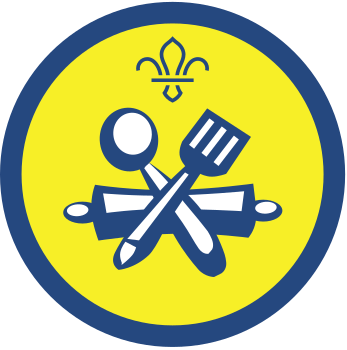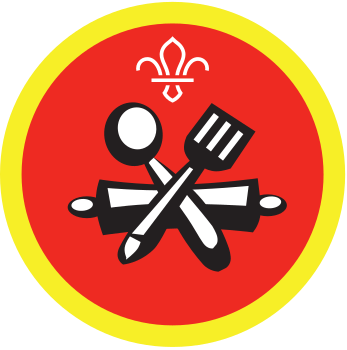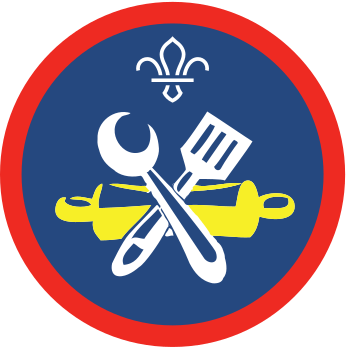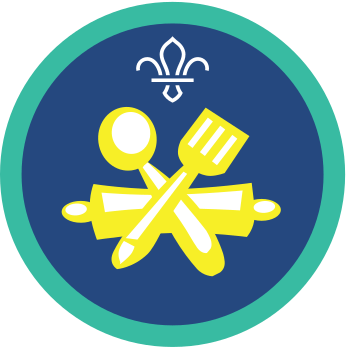
Make hot-cross buns in a mug
You’ll need
- Ingredients (see recipe card below)
- Mug (1 per person)
- Spoon
- Sieve
- Weighing scale
- Knife
- Chopping board
- Tinfoil
- Tea towel or oven gloves
- First aid kit for burns
Before you begin
- Use the safety checklist to help you plan and risk assess your activity. Additional help to carry out your risk assessment, including examples can be found here. Don’t forget to make sure all young people and adults involved in the activity know how to take part safely.
- Make sure you’ll have enough adult helpers. You may need some parents and carers to help if you’re short on helpers.
Using a kitchen and preparing to cook
- You could run our kitchen safety and hygiene activities, Kitchen risk bingo and Home kitchen hygiene prior to running this session.
- Remember to have a hand washing station and take extra hygiene precautions when handling food. Take a look at our guidance on food preparation.
- Make sure you have all the ingredients ready.
Dietary requirements, allergies and eating problems
- Remember to check for allergies, eating problems or dietary requirements and adjust the recipe as needed.
- Make sure you've checked everyone's dietary requirements and allergies then adapted the recipe as appropriate. This may include ensuring no cross-contamination during food storage, preparation and serving, too.
- Check if there are any items of food (or packaging) that people can’t touch or be near to or if there are items that people might not be comfortable using in the activity.
Introducing the activity
- Gather everyone in a small group and tell them that you’re going to make Hot Cross Buns in a mug.
- Hot Cross Buns are a traditional Easter dish. You could make this recipe as part of Easter celebrations.
- You may want to run a fire safety talk or show people how to use the equipment safely, such as for cooking or chopping ingredients.
Ingredients (per mug):
- 15 grams butter
- 1/2 medium egg
- 1 tablespoon milk
- 3 tablespoon soft light brown sugar
- 1/2 teaspoon mixed spice
- 2 tablespoon mixed dried fruit the kind with mixed peel in it
- 3 tablespoon self-raising flour
- 1 teaspoon cocoa powder
Prep time: 5 minutes
Cook time: 5 minutes
Makes: 1
Making the hot cross buns
- Remind everyone not to put anything made from metal in the microwave, including things with a metal trim. Avoid using a metal mug and make sure you don’t leave a metal spoon resting in the mug while it’s in the microwave, too.
- Everyone should chop weigh out the butter and put it into their mug. This then needs to be microwaved for 20 to 30 seconds, until it’s melted. An adult volunteer should take the mug out of the microwave using a tea towel or oven glove, then place it somewhere safe to cool down.
- Once the mug has cooled down, add the egg, milk and sugar, then whisk them together to combine them.
- Add the mixed spice, flour and salt, then mix everything together until the batter’s smooth.
- Next, add the mixed dried fruit and orange zest. Again, mix them into the batter.
- An adult volunteer should, or with an adult volunteer’s help you should, microwave the mug cake for between 1 minute 30 seconds to 2 minutes, depending on the rating of your microwave. When microwaving your mug cake, start with 1 minute 30 seconds. If the mixture is still wet on top, cook the hot cross bun for a further 20 seconds. Keep cooking it for 20 second blasts at a time until it’s just firm on top.
- An adult volunteer should take the mug out of the microwave using a tea towel or oven glove, then place it somewhere safe to cool down.
- While cake’s left to cool slightly, make a cross with two strips of foil or paper. You can make any shape for the top of your Hot Cross Bun. A cross is traditional, but if you have other stencils or shapes, such as a star or Fleur de Lis, you can use those.
- Once the mug has cooled down, lay the two strips of foil over the mug and, using a sieve or tea strainer, dust the top of the mug with cocoa.
- Once finished, remove the strips of foil or paper and you’ll reveal your cross.
- You can also simply dust all the bun with cocoa or, as an alternative, you could use cinnamon.
Reflection
This activity was a great introduction to the fun of cooking and developing a new skill!
Hot cross buns are something we often buy, so how did the experience of making them from scratch make you feel? Did you work well as a team? How did you make sure everyone got to take part? When cooking in the kitchen, how did you keep yourself and each other safe while you were cooking?
Why do you think Hot Cross Buns might be made or eaten at Easter traditionally? Did you enjoy eating them?
Did this activity give you more confidence to try making other baked goods? What may you try to make next? Are there any other ingredients that you think would make a yummy hot cross bun?
Safety
All activities must be safely managed. You must complete a thorough risk assessment and take appropriate steps to reduce risk. Use the safety checklist to help you plan and risk assess your activity. Always get approval for the activity, and have suitable supervision and an InTouch process.
- Cooking
Teach young people how to use cooking equipment safely. Supervise them appropriately throughout. Make sure it’s safe to use and follow manufacturers’ guidelines for use.
- Food
Remember to check for allergies, eating problems, fasting or dietary requirements and adjust the recipe as needed. Make sure you’ve suitable areas for storing and preparing food and avoid cross contamination of different foods. Take a look at our guidance on food safety and hygiene.
- Flammable items
Always take care when using flammable items, especially if you’re near fire. Always follow the manufacturer’s instructions and guidelines.
- Hot items and hot water
Kettles, cookers and microwave ovens produce a lot of heat by the very nature of them. Caution is needed when in contact with items that have been heated and young people should use them under adult supervision. Use on a suitable surface, protecting it if necessary. Never leave hot items unattended and make sure there’s a nearby first aid kit, with items to treat burns/scalds.
- Carbon Monoxide
Carbon monoxide (CO) is a serious risk, so make sure you cook or use appliances in a properly ventilated area. If you need a sheltered cooking area, consider an open sided gazebo, dining shelter or a marquee that has sufficient air circulation and ventilation. Take a look at our further guidance on carbon monoxide.
- Electrical equipment
Inspect cables for any damage before each use. A responsible adult should supervise people using equipment, and people should follow instructions on how to use them correctly and safely. They should be properly maintained and stored. Be extra cautious of trailing cables and water when using electric equipment.
If anyone needs help or struggles with fine motor skills, give them the opportunity to work in pairs, with a young leader or an adult volunteer. Alternatively, swap out the items for something easier to handle.
Remember to check your ingredients against any allergy or dietary requirements to ensure everyone can enjoy the recipe. This may mean using alternative ingredients.
All Scout activities should be inclusive and accessible.



